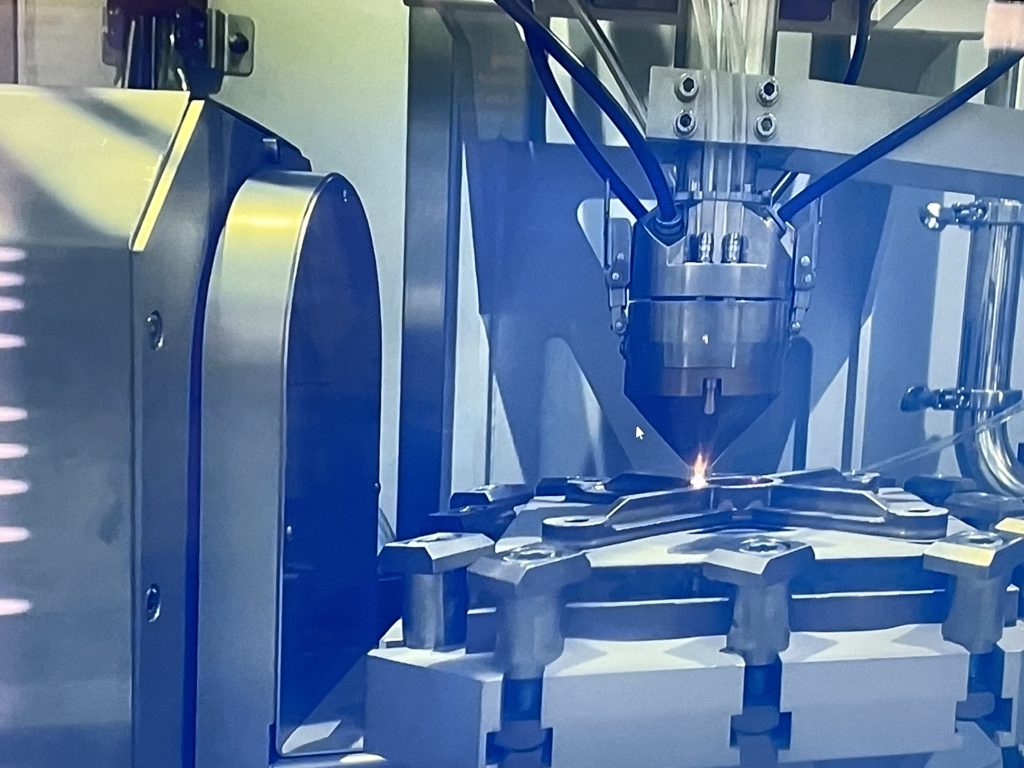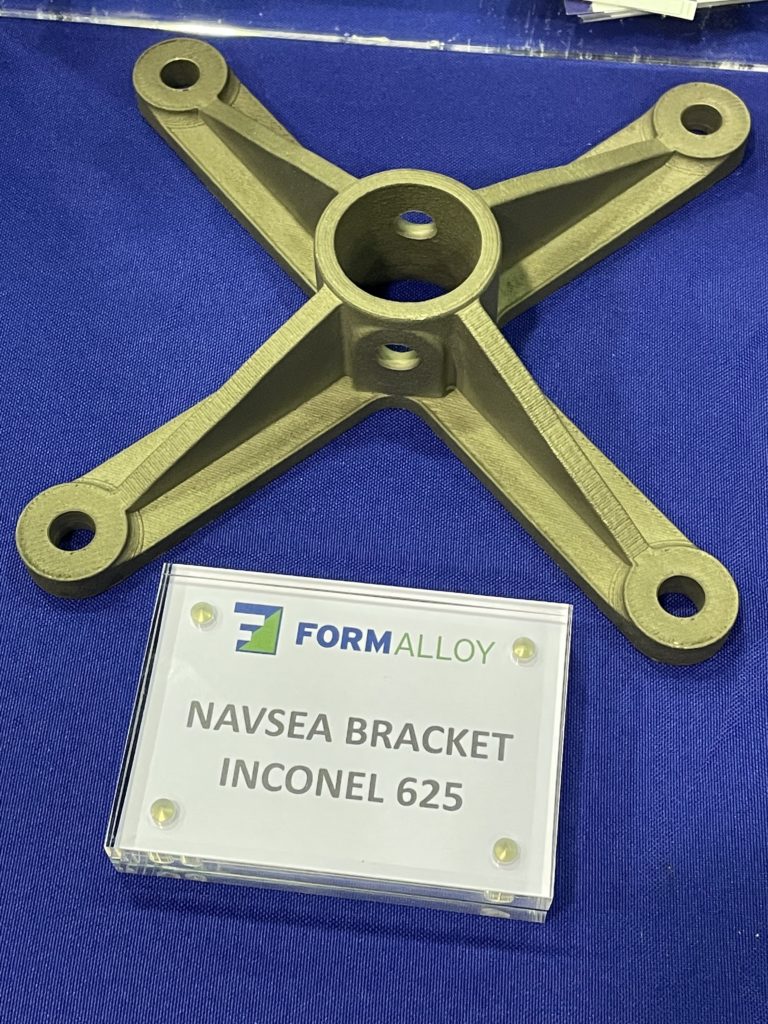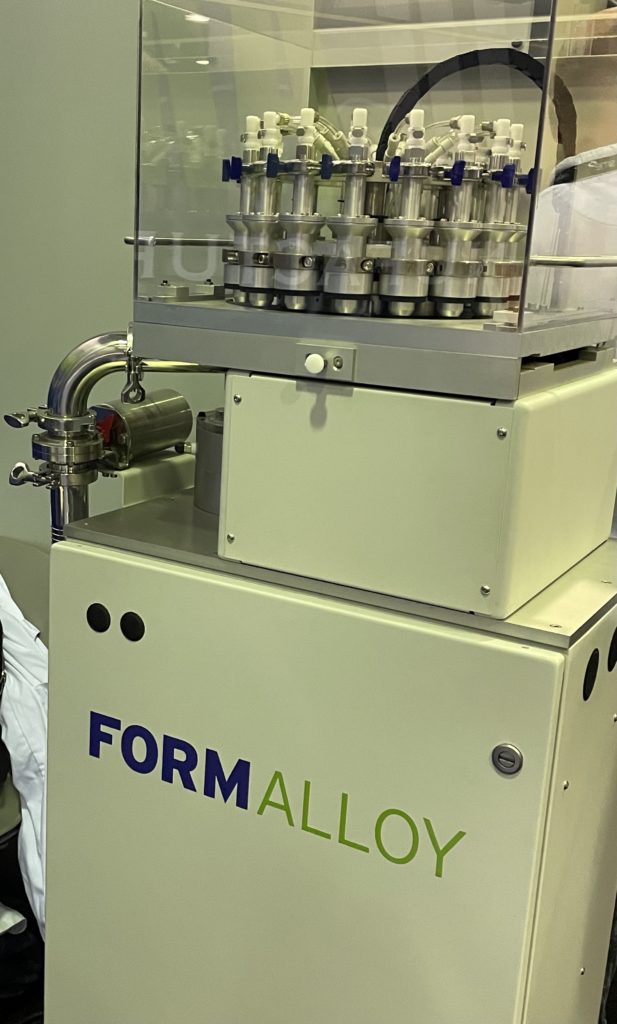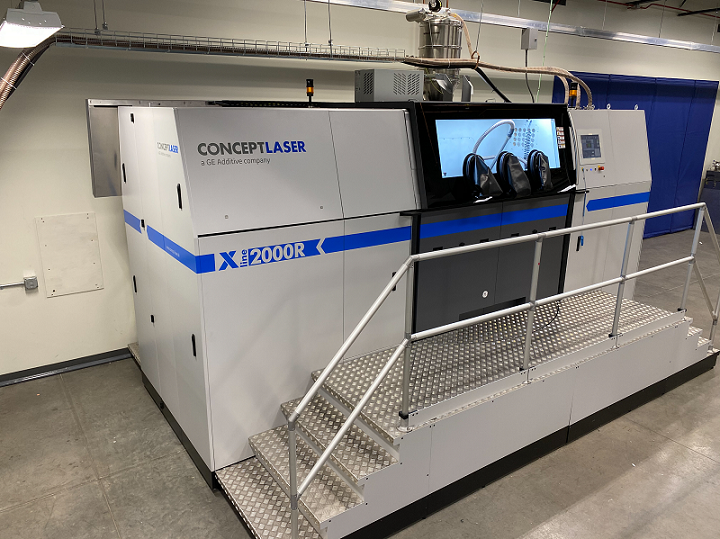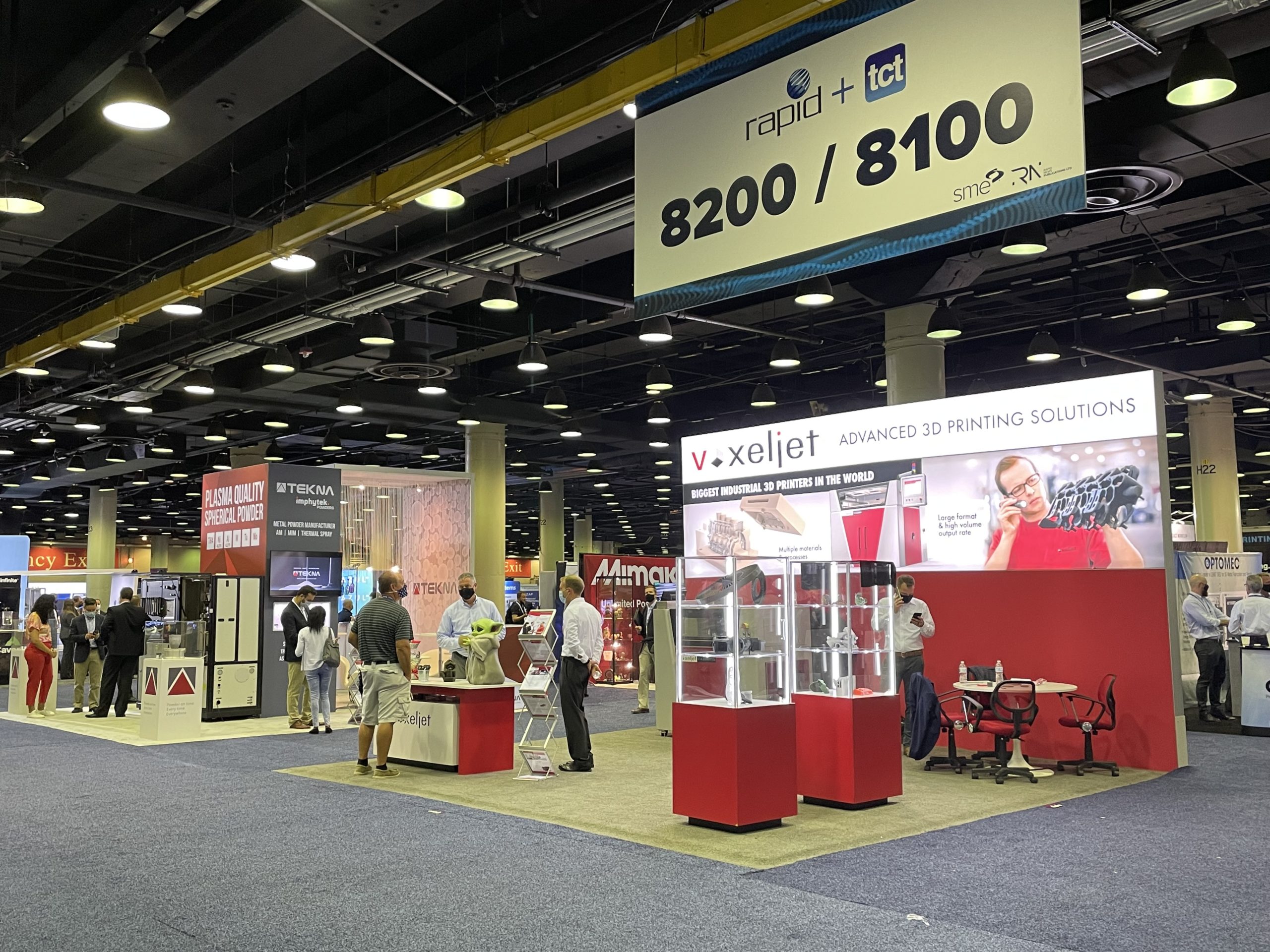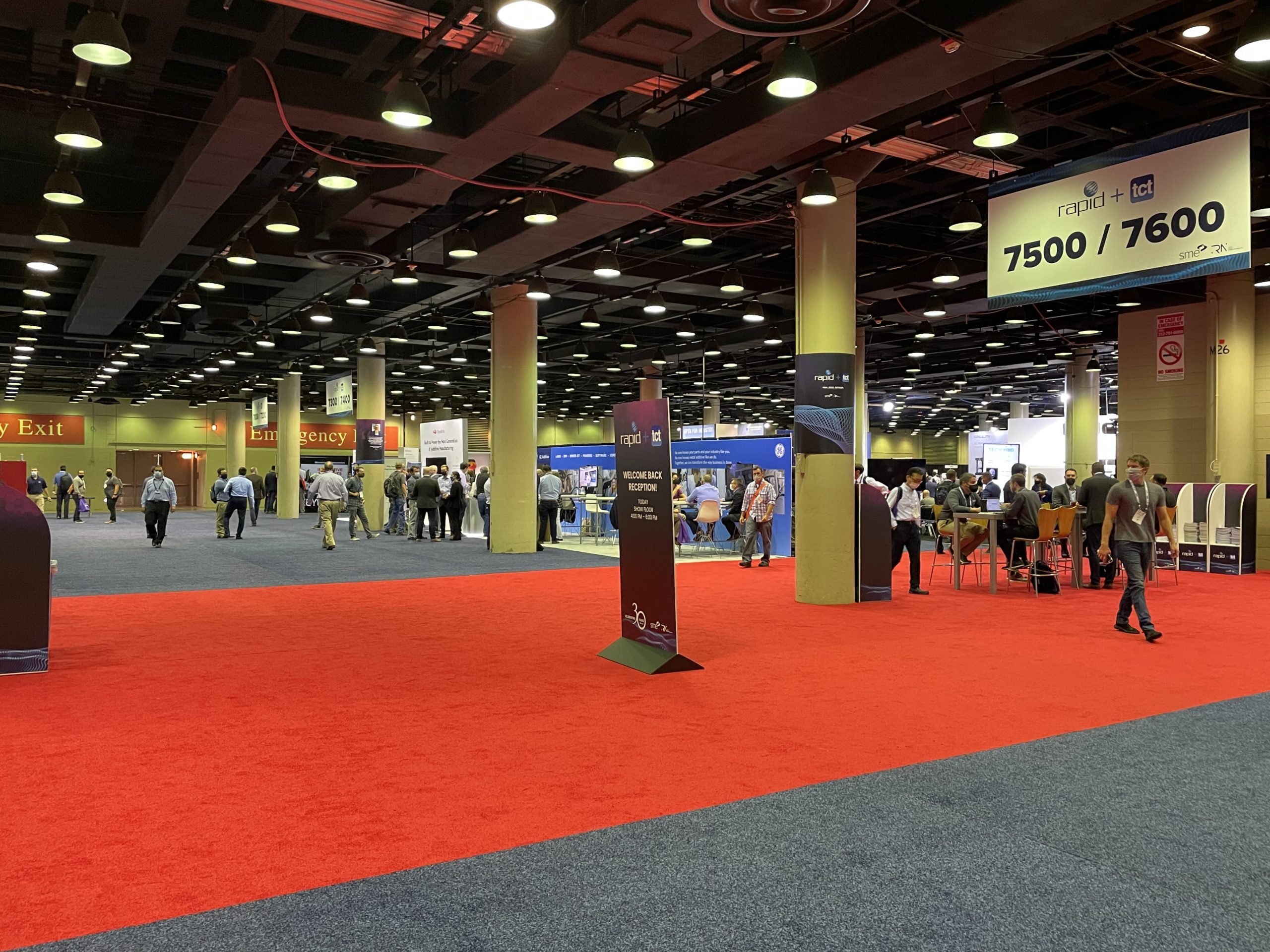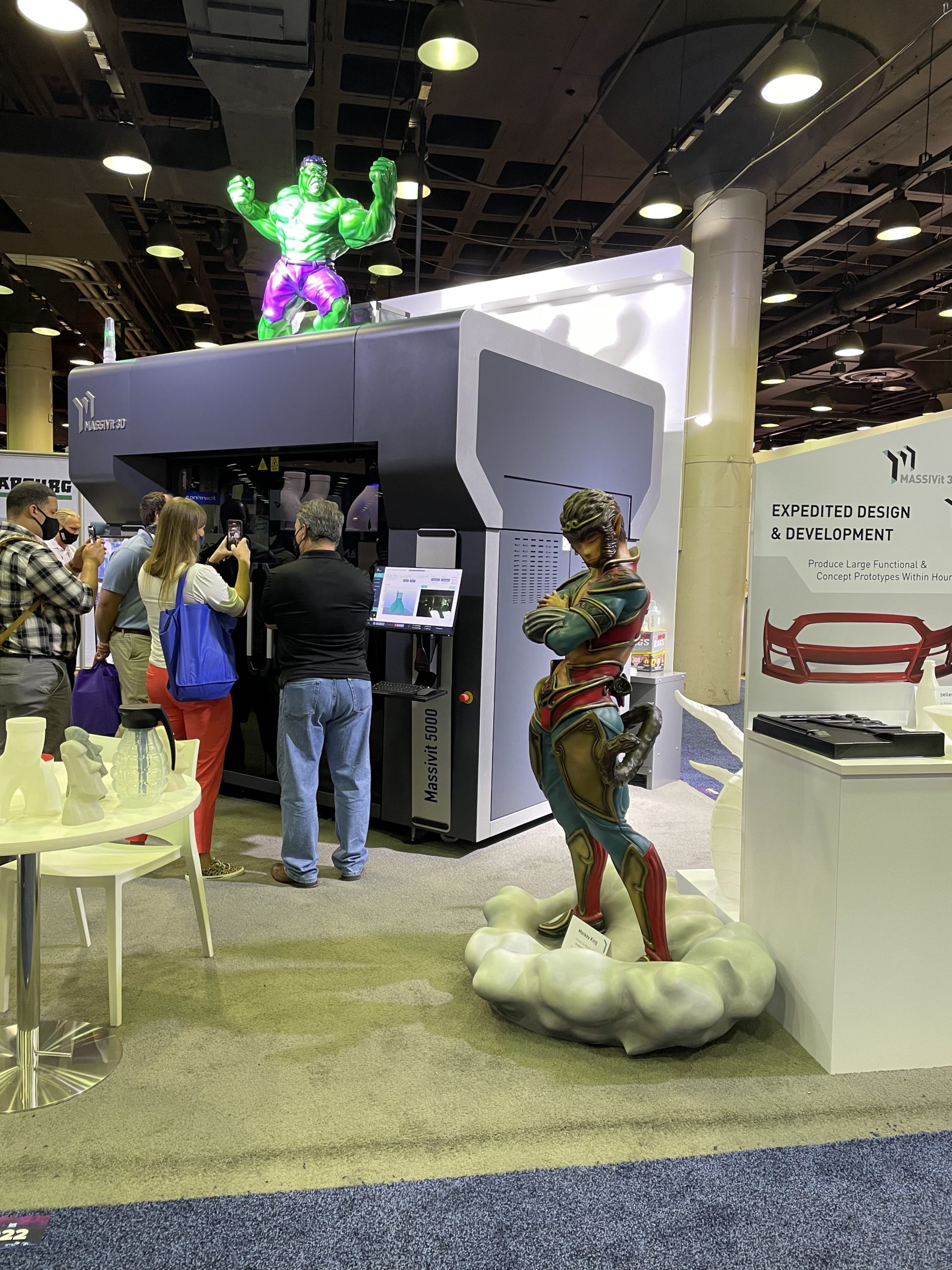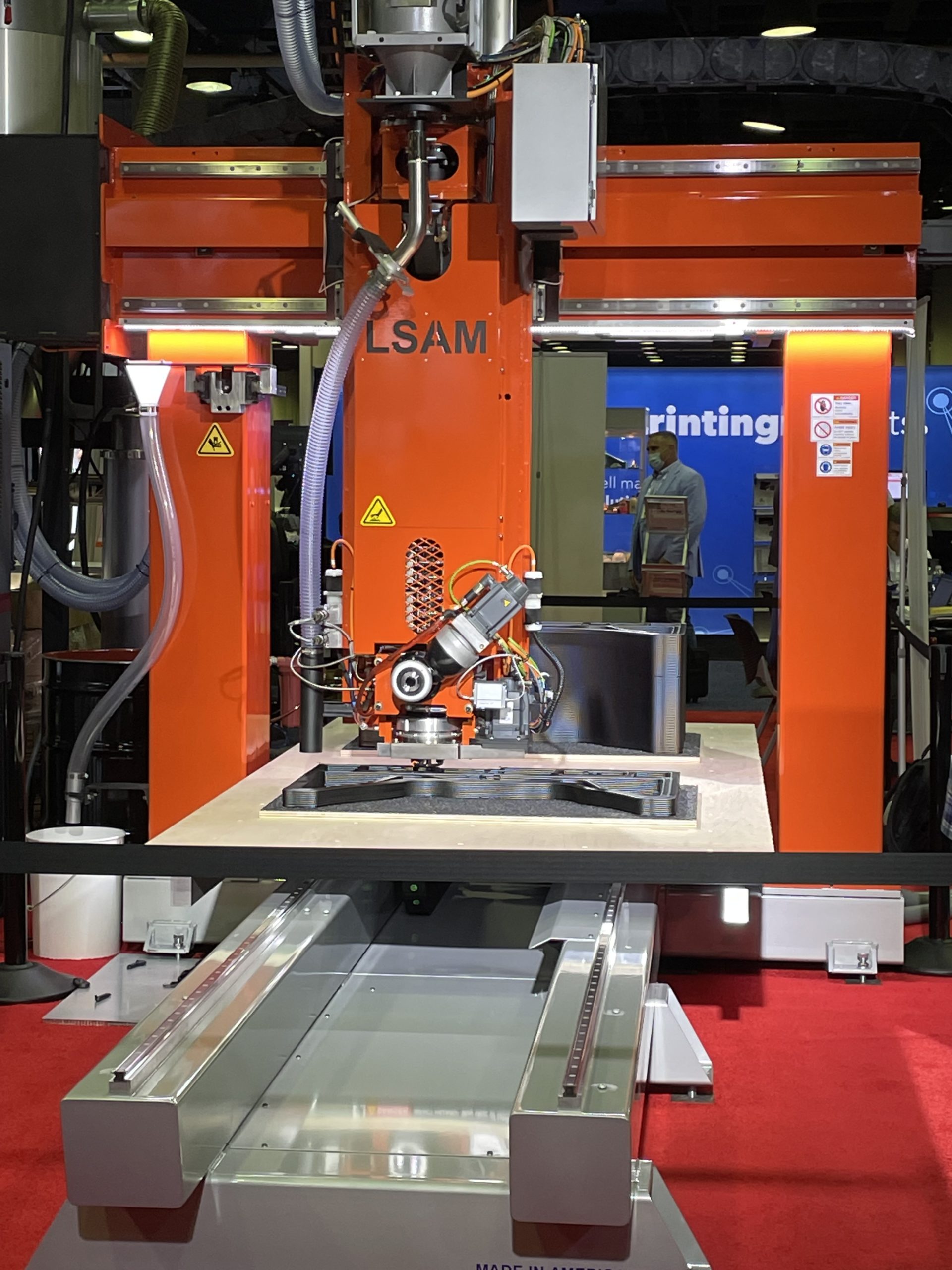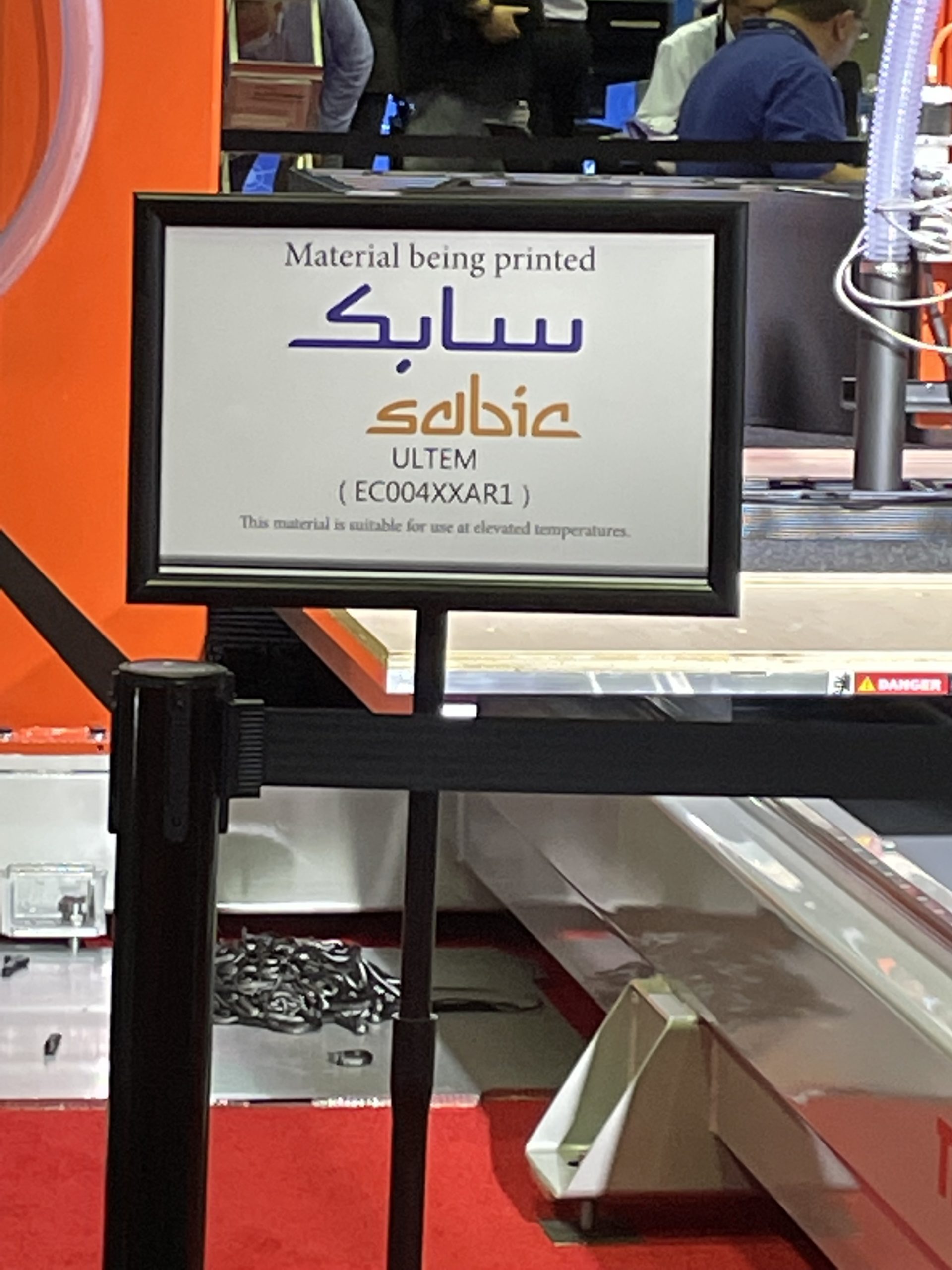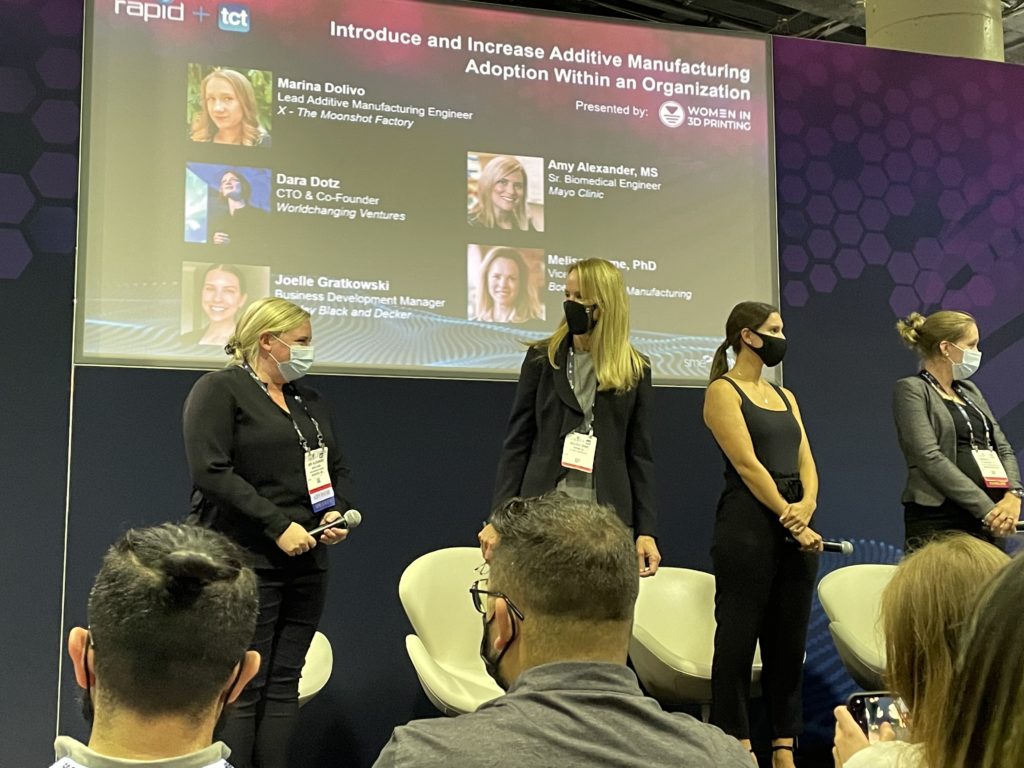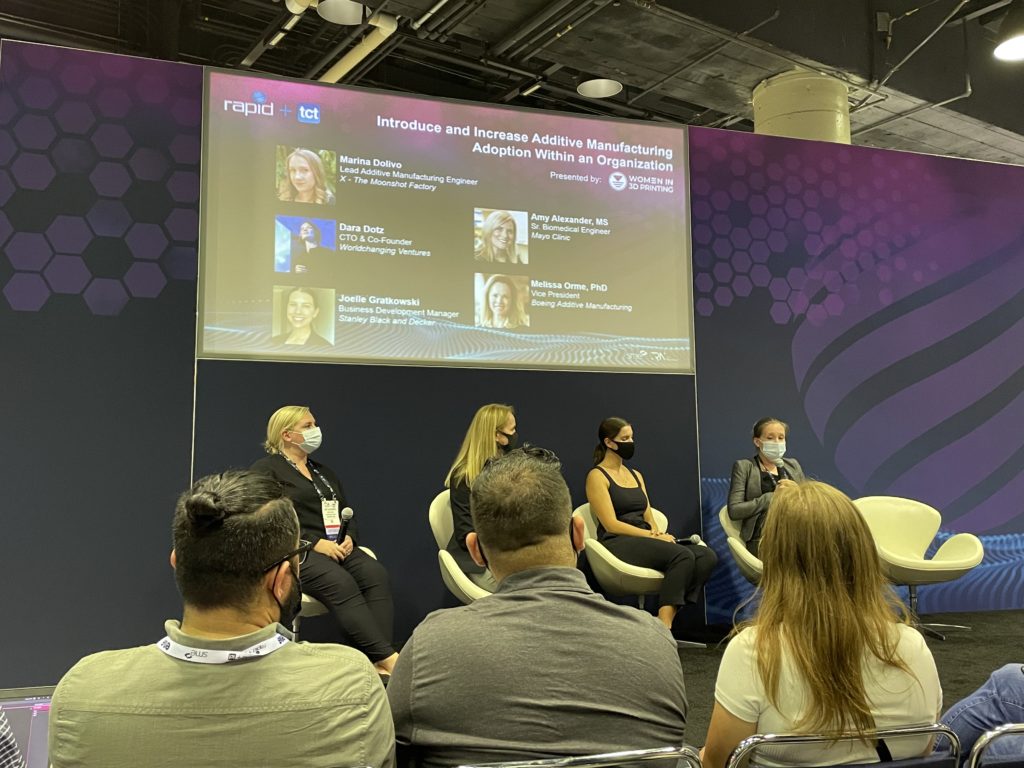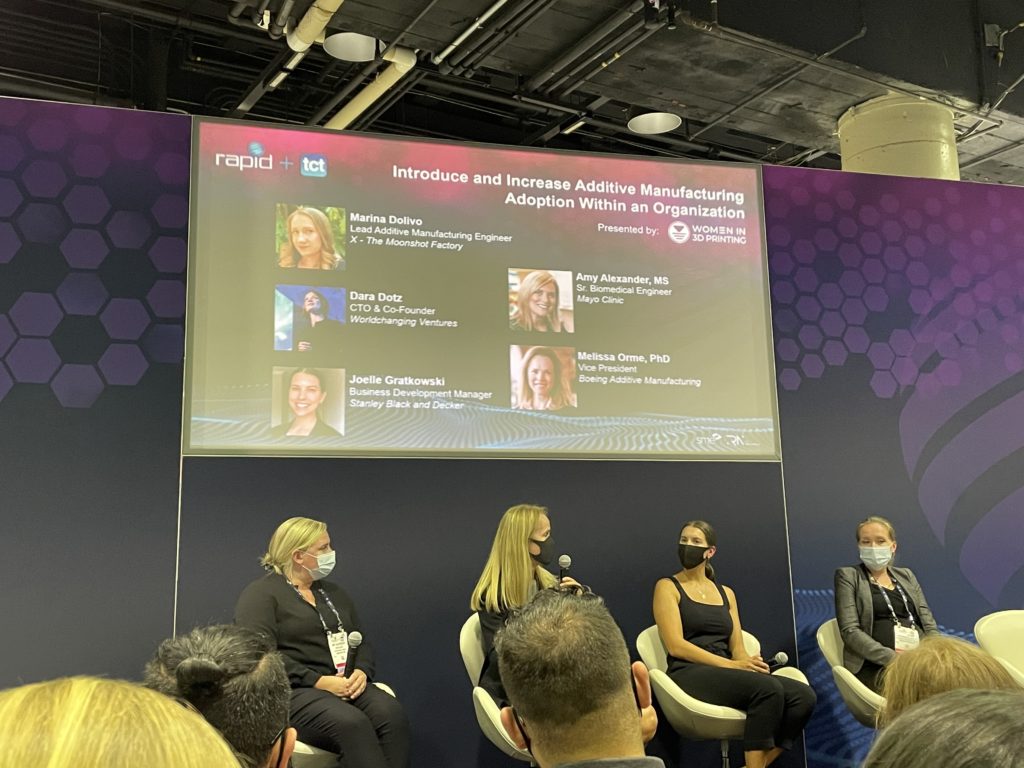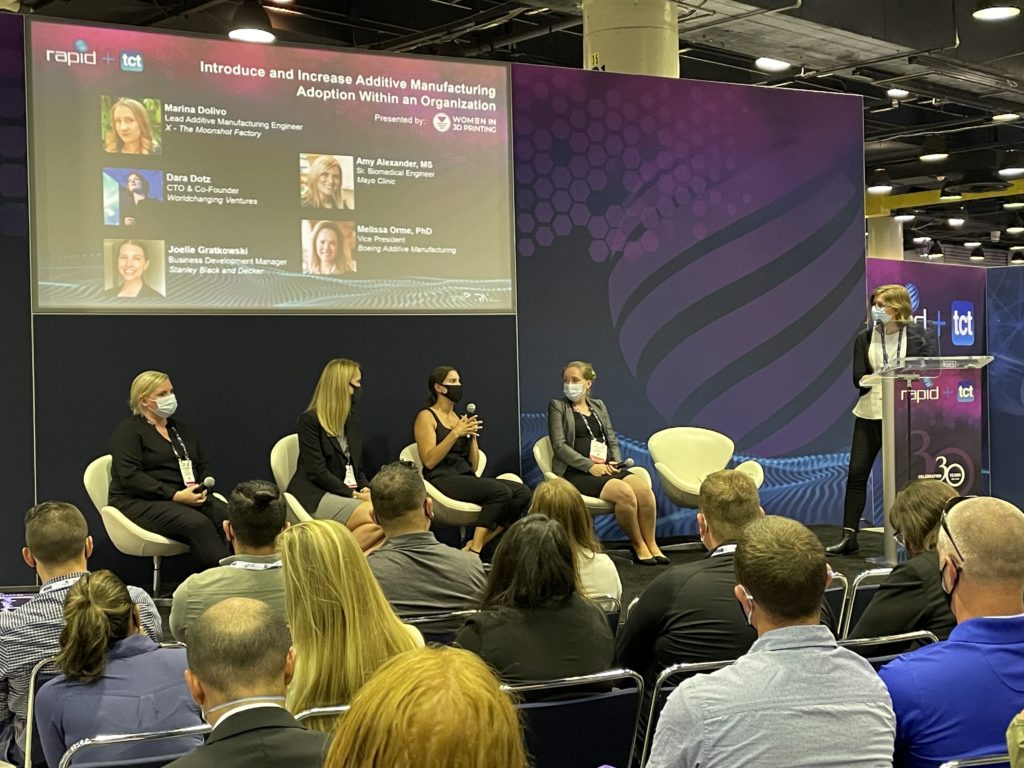Finally, after what felt like a very long, long time, North America’s largest, most influential additive manufacturing (AM) event got back to business! The 30th edition of RAPID + TCT took place last week at McCormick Place in Chicago, Illinois, and I spent three solid days on the show floor with all of the other masked attendees.
Here’s who I talked to while I was there:
FormAlloy
California-based directed energy deposition (DED) metal AM company FormAlloy just released its new DEDSmart software suite, which enables smarter builds and on-demand repair to give customers more confidence.
“Basically, it is software that can record the full build and create a digital twin of the build, so you can press play so that way you can do a full playback,” FormAlloy Co-Founder and CEO Melanie Lang told me at the company’s booth. “In additive, there are still a lot of people making a lot of tweaks, turning different knobs and changing parameters. This software enables you to capture that during the primary development process, and then once it’s locked in, truly have a frozen process where you do a playback and get the exact same build…it’s a very powerful tool.”
DEDSmart Data software ensures the recording of all build parameter data; then, users can output the data set and analyze it all in order to verify the quality of the build. With its unique playback feature, the system monitors all of a printer’s feeds, sensors, and speeds to build a history of the print in order to ensure repeatable components. DEDSmart Data was used to make the NAVSEA bracket in the image above, printed out of Inconel 625.
FormAlloy also had its new Alloy Development Feeder (ADF) at RAPID, set up behind its L-series DED printer. The ADF is a 16-hopper system, which I thought was the same amount it had been the last time I’d seen FormAlloy.
“The difference is that now it’s offered in a standalone mode,” Lang explained. “So if you have a different DED system, you can take our system now, since it comes with an optional HDMI, and then you can control the ADF, which basically controls the powder that’s flowing into the other system.”
The other thing that’s new with FormAlloy is its very fitting tagline: IMPOSSIBLE to AMPOSSIBLE. Check out another picture I took at the company’s booth: 6061 aluminum “teeth” that FormAlloy 3D printed for the heavyweight Ghost Raptor robot on the BattleBots show!
Protolabs
Eric Utley, 3D Printing Applications Engineer for rapid manufacturing company Protolabs, sat down with me for a few minutes before he had to go present on “Top Additive Rules to Ensure End Use Part Success with Metals,” focused on Direct Metal Laser Sintering (DMLS) technology.
“It’s primarily about designing parts for DMLS, setting them up for success, the advantages of leveraging metal to reduce weight and assemblies, some tips on how to design parts, and just kind of the thought process for designing for metal AM,” he said when I asked him what his presentation would be about.
It’s been a busy year for Protolabs, as the company purchased 3D Hubs, or Hubs, for $340 million earlier this year. In terms of its specific hardware offering, Utley said the biggest change is the addition of two new GE Additive X Line printers for printing large-scale parts out of Inconel 718, which he says is “surprisingly flexible,” give that it’s a high temperature material for prototyping. One system has already been onsite for a few months, while the other, meant for aluminum printing, is currently being installed.
“We don’t have a firm timetable on the aluminum X Line, but that’s coming soon,” he said.
Utley said that Protolabs, which also offers SLA, SLS, PolyJet, and MJF 3D printing technologies, has been busy expanding its capacity, and using DMLS to improve the sophistication of its operations.
“A lot of what we’re seeing is unmanned drones and robotics,” he said about popular DMLS applications. “Medical and aerospace are kind of leading the pack, but I think that second rung is going to be robotics and unmanned drones and specialized manufacturing equipment, like heat exchangers and extrusion dies.”
Finally, Utley said that Protolabs has also welcomed new post-processing and cleaning equipment, such as a vibrating system to support aerospace components and heat exchangers, and vapor smoothing on MJF systems, though the latter is only happening in Europe at the moment.
I spent a little time walking the show floor, and, in addition to more people than I’ve been around at one time in months, got to see some pretty interesting things at the various booths, such as Massivit 3D and Thermwood Corporation.
Dyndrite
At Dyndrite‘s booth, I learned a little more about the Seattle startup’s geometric kernel technology from CEO Harshil Goel, who told me that the Technology Pioneer‘s mission was to fundamentally change how geometry is created, transformed, and transmitted.
“A lot of people are familiar with CAD,” Goel said. “But there’s also transformation…once you’ve made all that 3D data, how do you take it and send it to the machine? Modern day 3D printers are getting much, much bigger, and their resolution is also increasing. So there’s kind of a data explosion problem.”
I agreed, noting that I’d seen a lot of really big 3D printers on the show floor that day.
“Every time they increase, it’s cubic, right? Because it’s volume. So even a little bit is massive. So our goal was to help build the engine that could basically keep up – handle these data requirements, and give people total power and control over their manufacturing process.”
Goel referenced one of Dyndrite’s Developer Council partners, explaining how the person had told him that it was “bullshit” that the company’s new machine could print faster than anyone could prepare the data for it.
“How backwards is that, right?” he said incredulously.
He also mentioned how the industry has been really focused on closed systems, and said that Dyndrite’s approach was very different—the startup is just interested in helping others get from point A to point Z, without trying to control them or steal their IP. Dyndrite created the Accelerated Computation Engine, and other companies are building software on top of it, including HP. The bottom line is that Dyndrite is trying to democratize the information, and help others learn about their 3D printing software options “in a way that’s actually accessible to someone who doesn’t have a PhD in laser optics.”
In one of the only presentations I was able to attend that wasn’t a keynote, I headed next to the SME Zone for an Industry Partner Presentation by Women in 3D Printing, “Introducing and Increasing Additive Manufacturing Adoption within an Organization,” moderated by Olivia Krueger, Quality Engineer with the Kohler Company.
“We need to focus a lot more on our education, and how we’re training our workforce and our peers to better understand and work in additive,” she explained when introducing the topic.
Then she introduced the panelists: Marina Dolivo, Lead Additive Manufacturing Engineer with X – The Moonshot Factory; Joelle Gratkowski, Business Development Manager for Stanley Black and Decker; Amy Alexander, MS, Senior Biomedical Engineer at the Mayo Clinic; and that morning’s keynote speaker, Melissa Orme, PhD, Vice President of Boeing Additive Manufacturing. The first question was directed at Dolivo, as Krueger asked what tools she was using to engineers at her company to use additive manufacturing in a productive way.
“I held a few lunch and learn sessions to educate our engineers about our materials, machines, and what to outsource,” she answered. “I also keep a running log of use cases, it’s a really good way to demonstrate previous successes.”
Dr. Orme added that, for a very large company like Boeing, they tried to embed AM engineers in their product development teams, so they can explain how the technology could add value to the programs and what may or may not be a good candidate for additive.
“It’s like an on-demand training specific to their programs,” she explained.
It warmed my heart to hear Alexander say that she was “unfamiliar” with people being adverse to using the technology, as I have often heard the opposite: because the medical sector is dealing with people’s lives, it requires many exacting certifications and specifications, and those who work in the healthcare field can be hesitant to adopt new technologies like additive.
“In the medical field, additive manufacturing makes sense for several reasons, such as a low barrier entry for prototypes,” Alexander said.
Dr. Orme replied to this, noting that engineers are specifically taught to design for lower risks, so the parts can be successfully FAA-certified.
“We have to prove that it’s at a readiness level so it can be certified and put on an airplane,” she continued.
Gratkowski noted that it can be hard for companies that have been manufacturing parts for over 50 years to pivot and try something new.
“We’re focusing on champions that are pushing for additive, we call them our citizen developers and citizen designers. We make sure they have the resources they need to showcase what additive can do, so it will get others thinking about how they can use it and really understand the different types and the design guidelines.”
Krueger asked the panelists what they were doing to get their non-champion engineers to take the initiative to seek out learning opportunities for themselves, and Gratkowski again brought up the importance of just providing them with the resources and information they need, in addition to examples of successful applications.
“Where you show more success, that’s where you’ll get more traction.”
Dolivo said if she comes across a use case that would be good for making the switch to additive, she’ll meet with the engineers.
“Maybe we’ll start with traditional manufacturing and then we’ll do a benchmark with additive, to let them realize that it’s potentially a good way to make the part from the beginning.”
Dr. Orme cautioned that we need to make sure that people aren’t just 3D printing parts that don’t make sense.
“The first thing that we do is run a business case analysis – does this make sense, what’s the value added? And sometimes we do have to say stop,” she said. “We want enthusiasts, but we also want them to be able to add that value.”
Alexander said that what Dr. Orme just described is called “appropriateness criteria” in medicine, noting that physicians aren’t going to take a CT scan for something that needs a Band-Aid.
Touching on what Alexander said, Krueger asked how the panelists helped engineers understand when AM was appropriate to use. Dr. Orme said that at Boeing, they go to the teams and work directly with them.
“We’re thinking of a whole new program, a whole new vehicle. It takes a whole new order of thinking,” she explained. “Really, it’s us going out into the field and training, and then those people train others.”
Gratkowski said engineers are inherently looking to solve problems, and that it’s important to remind them that additive can be a great tool for solving some of those problems, such as items that have very long lead times or need to have their weight reduced. Dolivo explained that she tries to get involved early on in a project, as it’s “hard to want to change midway through.”
Krueger brought up the “grand concept of dual stream manufacturing,” where parts are designed for both additive and subtractive manufacturing for a more flexible supply chain, and noted that in her experience, it can be very difficult to get engineers to think both ways simultaneously.
“I’m not a fan of that, because if you’re designing in two ways, then you’re not optimizing your design for additive,” Dr. Orme said, explaining that people want to use additive manufacturing when traditional manufacturing won’t work.
Dolivo agreed with Dr. Orme’s assessment, stating that in those types of cases, “I’ve found that they design purely for subtractive manufacturing, and then try to get it 3D printed, and it’s not great.”
“When you introduce a new machine, it can be challenging. You have to come up with case studies. But when you get new technology in your shop, how do you spread the news not only as a capability, but also to get them to start thinking about it, when you don’t have any internal case studies?” Krueger asked the panelists.
Gratkowski said it’s extremely important to work with the teams to explain the new technology, as well as getting them hands-on experience.
“That way they feel that connection to it, rather than just trying to create something for it,” she explained.
Dr. Orme said she has to answer the question of why a new manufacturer or technology has been brought in, ensuring that it’s at the proper readiness level for the engineers to use it, which can take a lot of work.
“Sorry to the machine manufacturers out there,” she said, “but you can’t just plug in a machine and print out a part that can be immediately ready and certified.”
According to Dolivo, the lab at X – The Moonshot Factory is much more experimental, so it’s really helpful to have a backlog of use cases to turn to and see if “something from the past could be made even better with this new technology.”
“Just having lots of hands-on samples at the lab, where people can feel and touch them. Even the failed ones. It’s very educational,” she continued.
Dr. Orme laughed, and then everyone else did as well, when she said that Boeing referred to that collection of samples as the “petting zoo.”
Alexander said that she differed from the rest of the panelists, explaining that when Mayo Clinic purchases a new machine, “we have to be prepared to basically open the barn doors.”
“We added lots of technologies one after the other, from metal to powder to binder jet, and the physicians would ask, okay, what can we do with this one? They would study up on the terminology.”
Krueger’s final question to the panelists was about what hurdles they see in the adoption and implementation of additive manufacturing. Alexander’s response was understanding the systems from top to bottom, regulating the various processes, and then getting feedback from different entities on what specifically that means.
“Getting those answers is key in understanding where we fit into this ecosystem,” she explained. “We’re not marketing or mass-producing, we need to make parts for the rarest of the rare. If a patient comes in on Monday and has to have a tumor removed that week, we need to be able to print a model fast so they don’t have to fly back out to Minnesota again.”
Gratkowski said the answer for her, and Stanley Black and Decker, was the difficulty of creating a business case and getting an ROI when trying to bring in really large pieces of manufacturing equipment.
“It’s really hard to make a business case and justify a one or two million dollar machine. Finding use cases that already exist in your products is really difficult, when we know the benefits are really the new stuff.”
According to Dr. Orme, Boeing has two major hurdles to get over in terms of AM adoption and implementation, and the first is getting repeatable, reliable material characteristics out of the same machine models.
“That’s what we need for the FAA, everything needs to be the same,” she said. “The second problem is culture, and that’s to design for additive first. The engineers want to make sure that it’s repeatable and reliable before they buy in 100%.”
Dolivo said that for her, it’s testing and proving that 3D printed parts will last, “not only for engineers but also for managers.”
“Just running those studies and getting that capability down,” she said.
Stay tuned for more 3DPrint.com coverage from the show floor at last week’s RAPID + TCT 2021!
Subscribe to Our Email Newsletter
Stay up-to-date on all the latest news from the 3D printing industry and receive information and offers from third party vendors.
Print Services
Upload your 3D Models and get them printed quickly and efficiently.
You May Also Like
Consolidation in AM: How 2025 Is Shaping the Industry’s New Normal
The first half of 2025 has been marked by a clear shift in the additive manufacturing (AM) industry. Companies are no longer just focused on developing new tech by themselves....
Etsy Design Rule Change Reduces Selection of 3D Printed Goods
Online marketplace Etsy has implemented a rule change requiring all 3D printed goods on the site to be original designs. The update to the site’s Creativity Standards states, ¨Items produced using...
U.S. Congress Calls Out 3D Printing in Proposal for Commercial Reserve Manufacturing Network
Last week, the U.S. House of Representatives’ Appropriations Committee moved the FY 2026 defense bill forward to the House floor. Included in the legislation is a $131 million proposal for...
Transforming From Tourist to Native: Duro CEO Michael Corr Explains Why the Company Rebuilt its PLM Software on AI
In these early innings of the AI boom, many market analysts have expressed concern that AI spend has gotten too far ahead of the technology’s proven ability to deliver significant...


